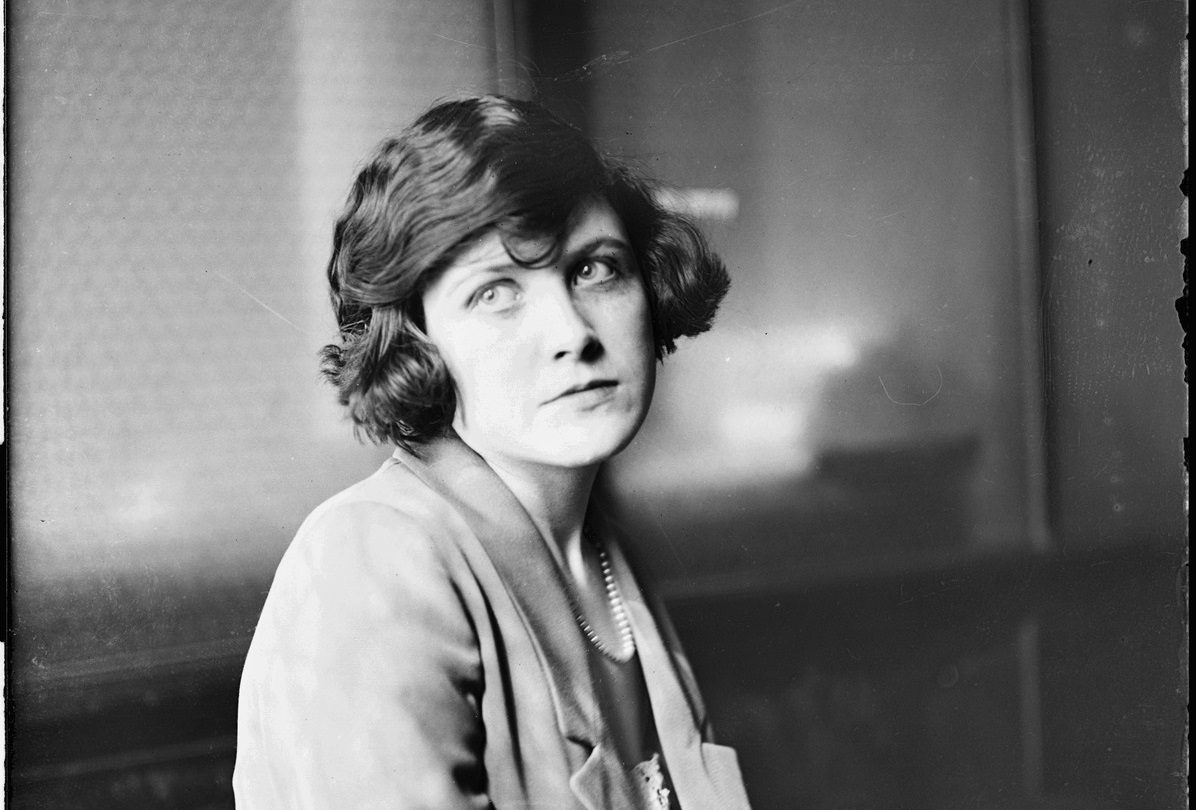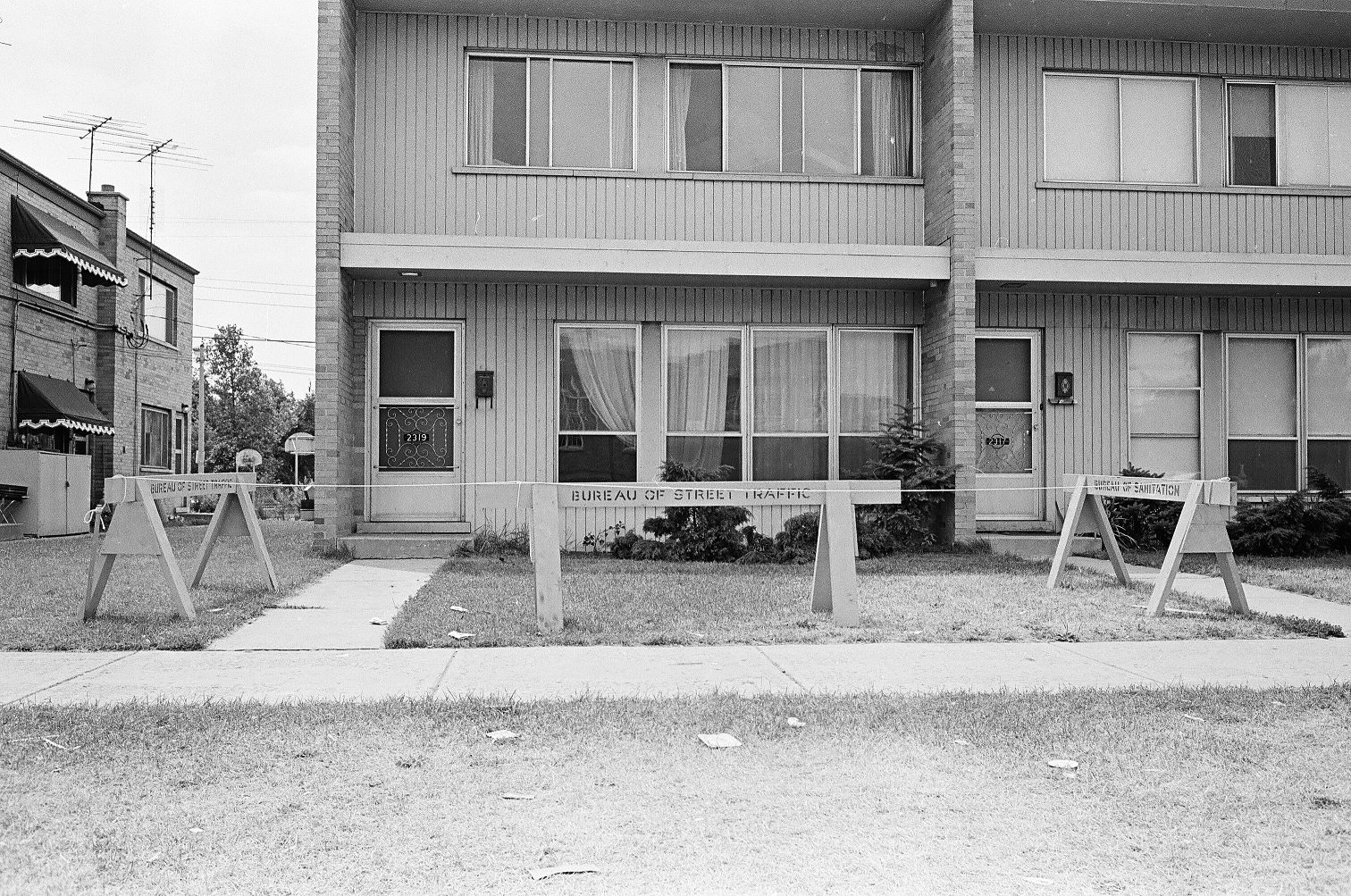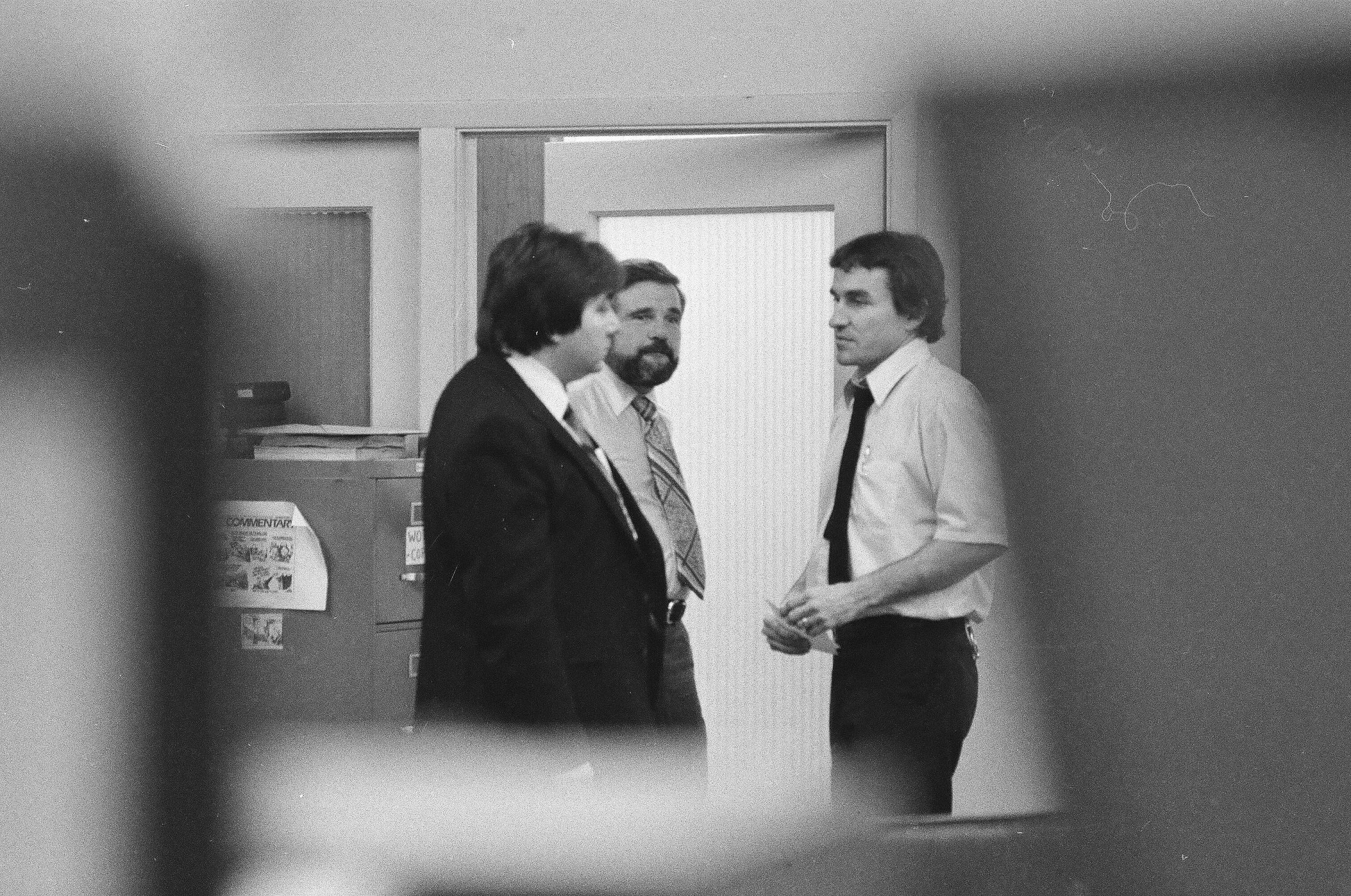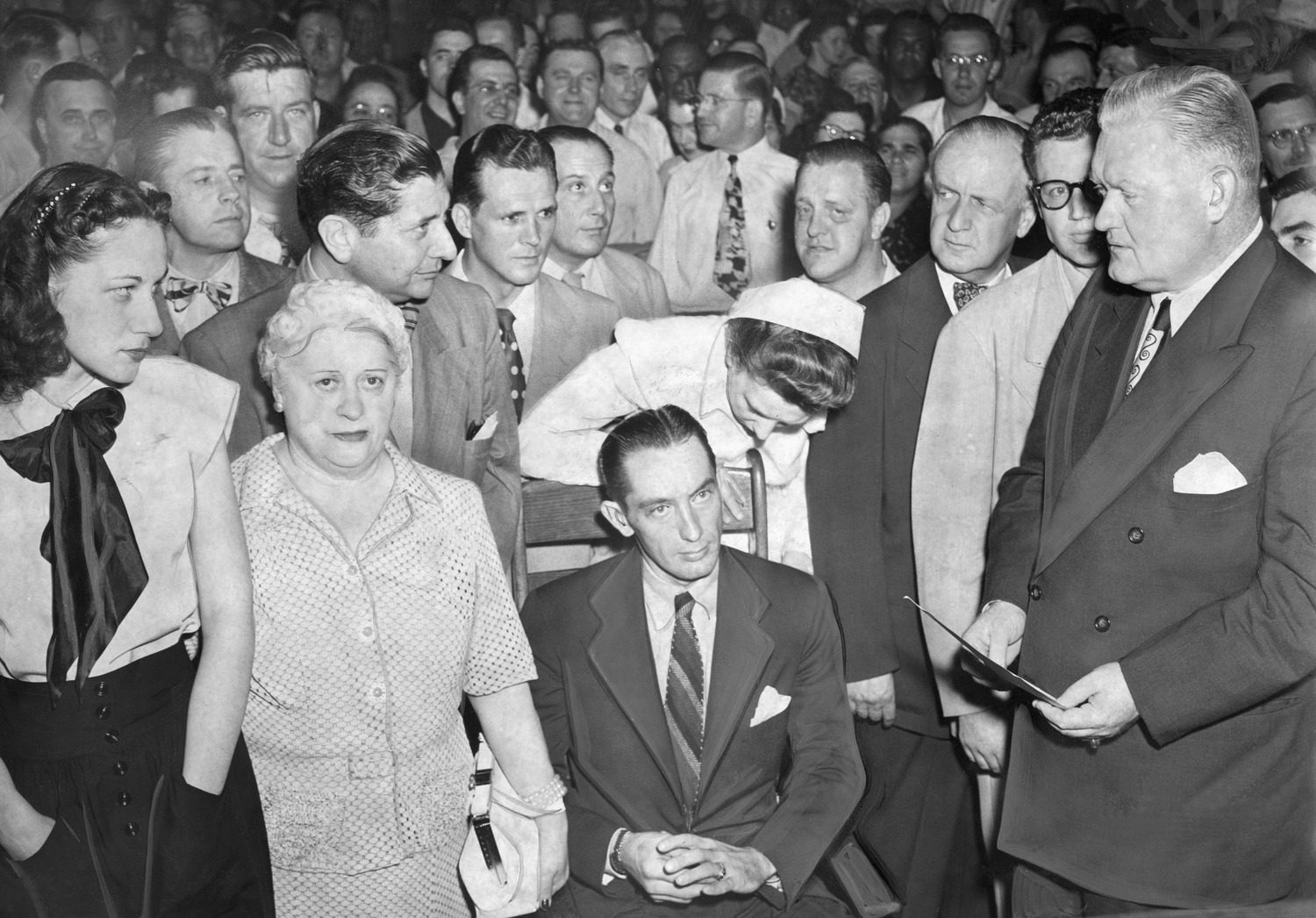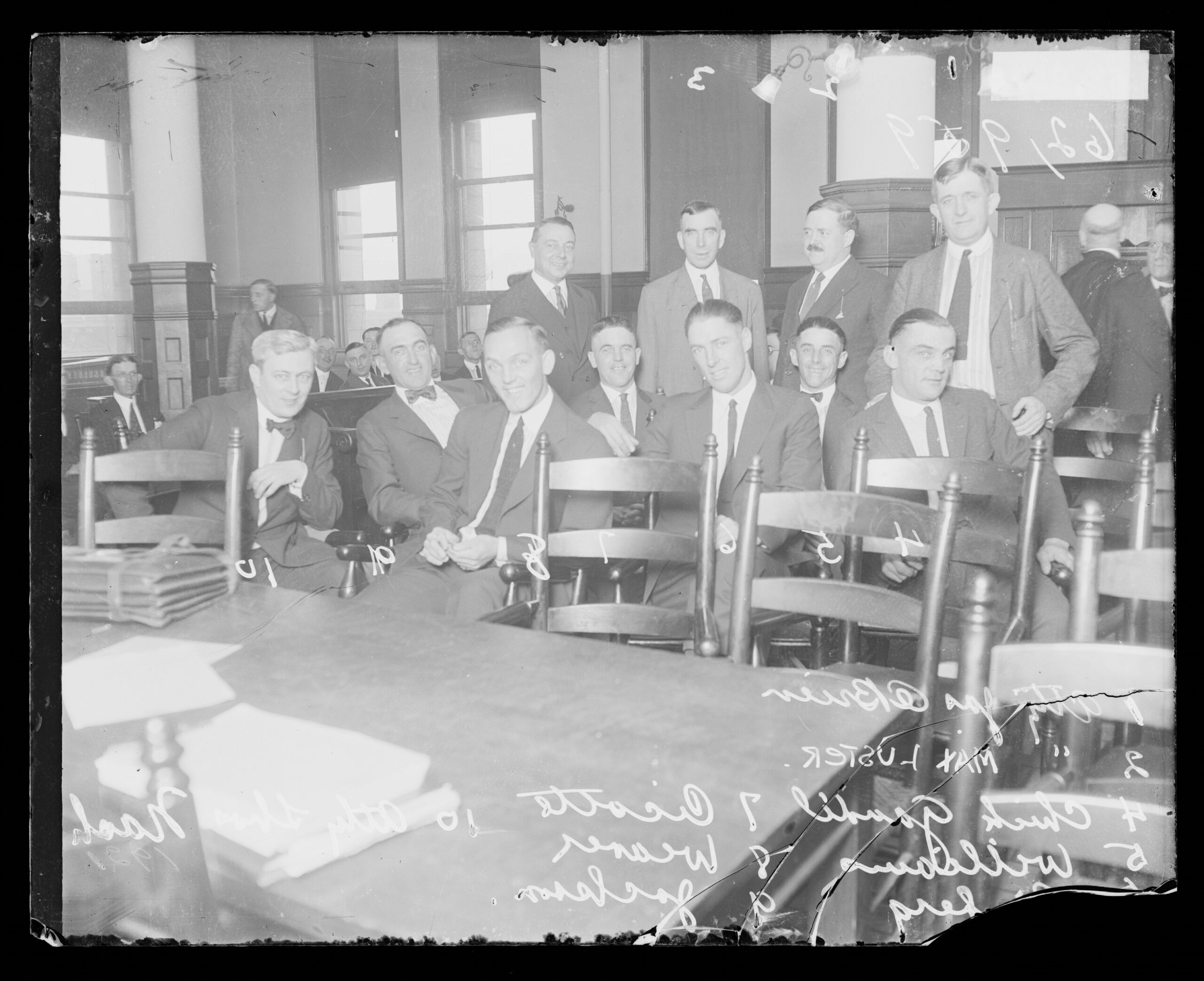Chicago, a city renowned for its architectural marvels and cultural richness, has a darker side to its history–one that unfolds through infamous true crime cases. In this blog post, Ayah Elkossei of the Chicago History Museum’s Abakanowicz Research Center (ARC) shares about the abundant resources for those fascinated by the city’s criminal past. Content warning: Some of the resources discuss heinous acts of violence and sexual assault, which may be distressing or triggering.
The newly available True Crime LibGuide is a digital treasure trove crafted by ARC staff to help you explore our holdings on the enigmatic world of Chicago’s criminal underbelly.
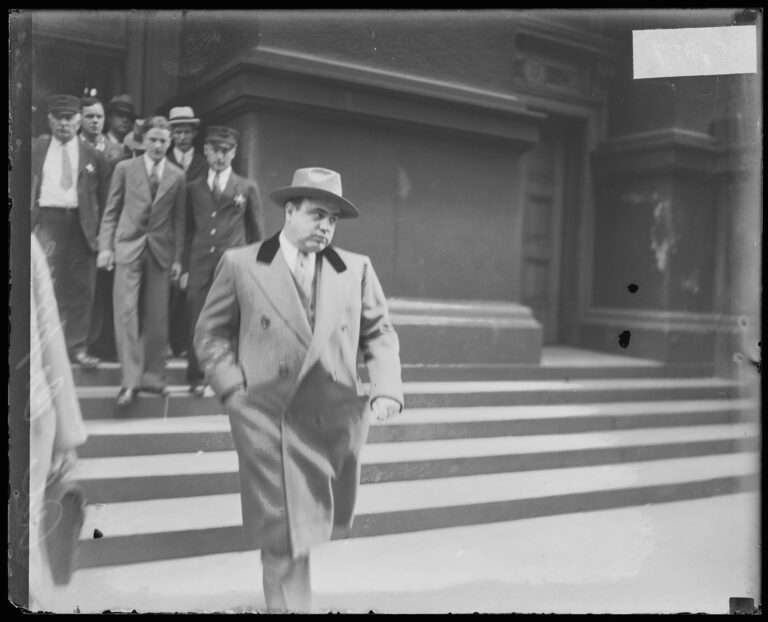
Al Capone leaving court during trial for tax evasion, Chicago, c. 1931. DN-0096927, Chicago Sun-Times/Chicago Daily News collection, CHM
The LibGuide has five categories, which will guide users through the various entry points into true crime research. Starting with a list of Specific Cases, it delves into notorious trials that have left an indelible mark on Chicago’s history. From the chilling tales of notorious mobster Al Capone and serial killers, such as John Wayne Gacy, to the complex tapestry of political scandals, this section not only captures the attention of true crime enthusiasts but also serves as a valuable resource for those venturing into the depths of historical research methods. One of the highlights in this category is the Museum’s extensive material on the infamous duo, Leopold and Loeb.
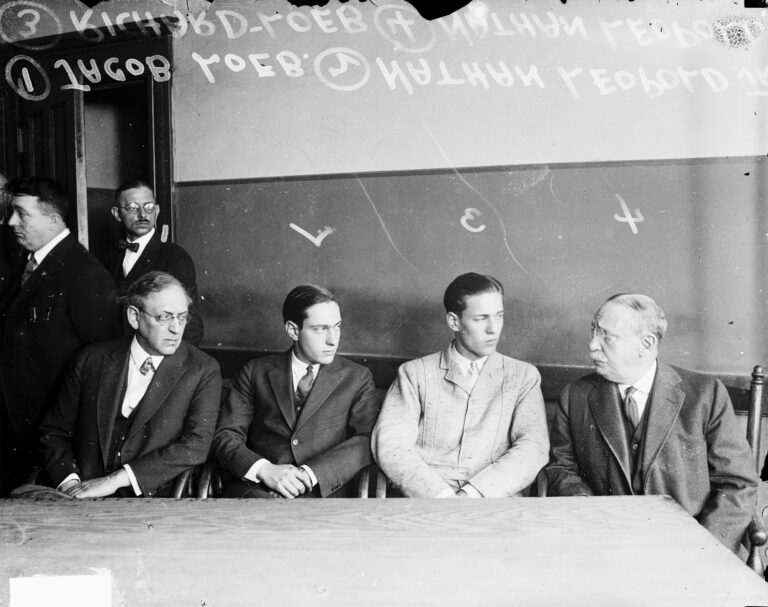
Jacob Loeb, Nathan Leopold Jr., Richard Loeb, and Nathan Leopold Sr. sitting at a long table in a room in Chicago, before Richard Loeb and Nathan Leopold Jr. went on trial for the murder of Bobby Franks, June 2, 1924. DN-0078038, Chicago Daily News collection, CHM
In the Archives and Manuscripts section, you can explore primary sources such as firsthand accounts and historical documents. It is a journey beyond the headlines, providing a nuanced perspective that goes beyond conventional narratives. One of our most popular (and heavily restricted) collections is featured in this section, that of the Chicago Police Department’s Red Squad. This section also highlights several of CHM’s collections that reveal insights into unfair murder investigations and judicial misconduct, shedding light on the inequities within the justice system.
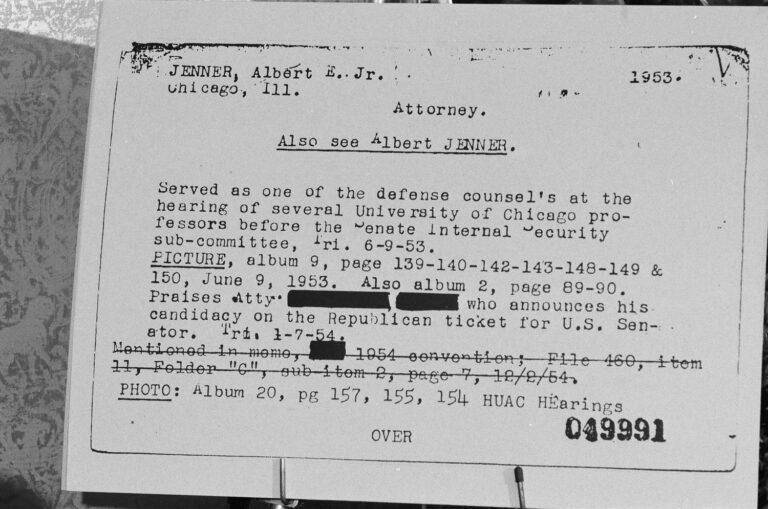
Example of a Red Squad record at a press conference held by the Representatives of the Businessmen for the Public Interest regarding the Red Squad at the Executive House Hotel, 71 E. Wacker Dr., Chicago, January 5, 1977. Twenty-four Chicagoans claim they were watched by the Red Squad for years and filed a lawsuit that seeks to end the police surveillance. ST-60002106-0029, Chicago Sun-Times collection, CHM
The next category features essential Published Materials and provides a curated list of books and published materials on various figures and topics. These materials offer not only in-depth insights but also serve as guideposts, pointing researchers toward other relevant sources and avenues of exploration. This section isn’t just books! There are some unique and unconventional materials here such as a scrapbook of miscellaneous Chicago crime stories, cut from 1930s-era detective magazines.
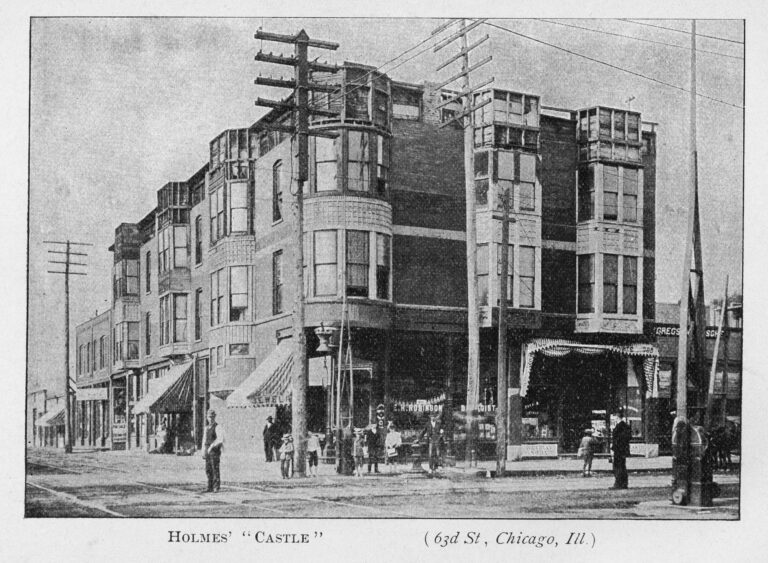
Exterior view of residence of Herman Webster Mudgett, a.k.a. H. H. Holmes, on 63rd Street, Chicago, c. 1896. Published in The Holmes-Pitezel Case: A History of the Greatest Crime of the Century. CHM, ICHi-027827
For those who prefer a strictly visual approach, the category on Image Research offers access to more than 370,000 digital images via CHM Images. Keyword searching will bring up a great deal of material relating to Chicago crime. These images, capturing crime scenes and events that defined Chicago’s past, provide a unique and evocative perspective for researchers. Delving into the Museum’s photo morgue collections, including the Chicago Sun-Times and Chicago Daily News, allows access to an additional 5 million images plus, creating a visual tapestry that recounts criminal activity in the city’s past.
Lastly, the LibGuide highlights Online and Other Local Resources, directing researchers to other institutions in the Chicago area focusing on crime and criminal justice. It is an invitation to further explore beyond CHM’s offerings.
We hope that this resource will help researchers, students, and true crime enthusiasts alike explore Chicago’s enigmatic criminal narratives.
